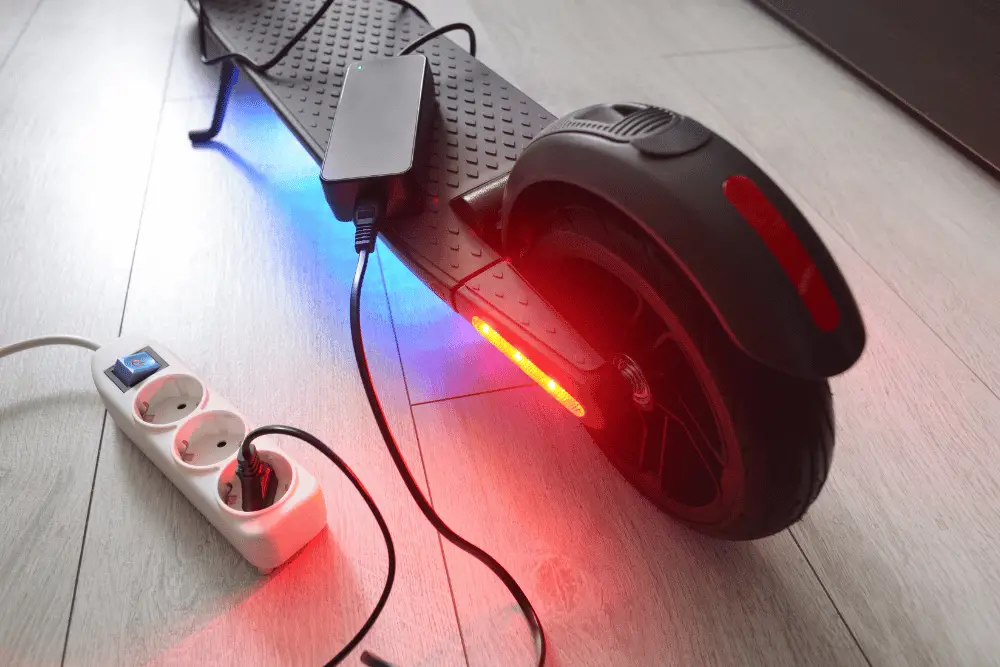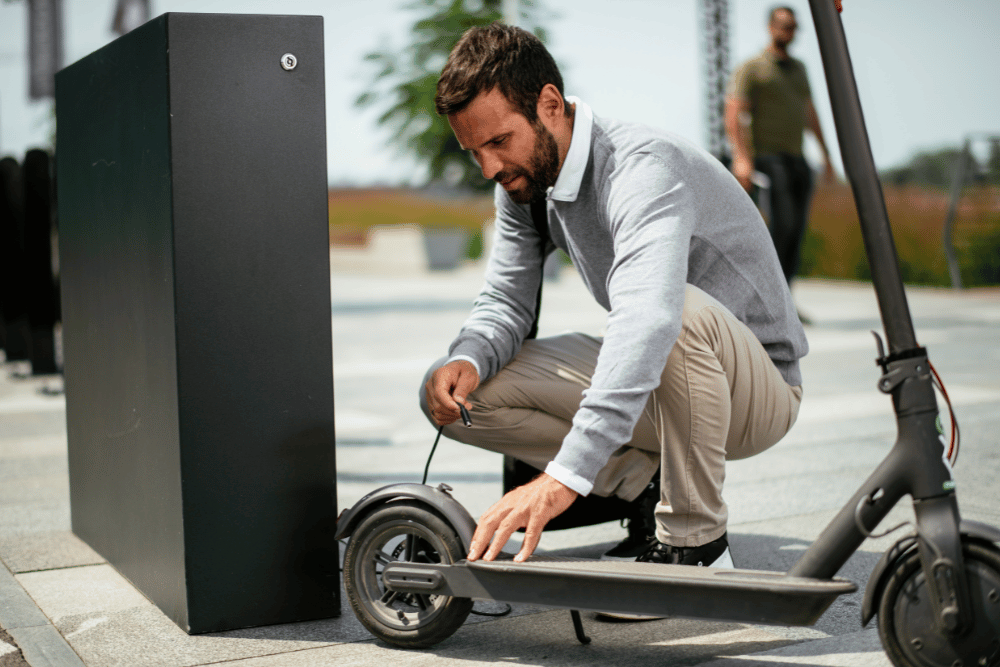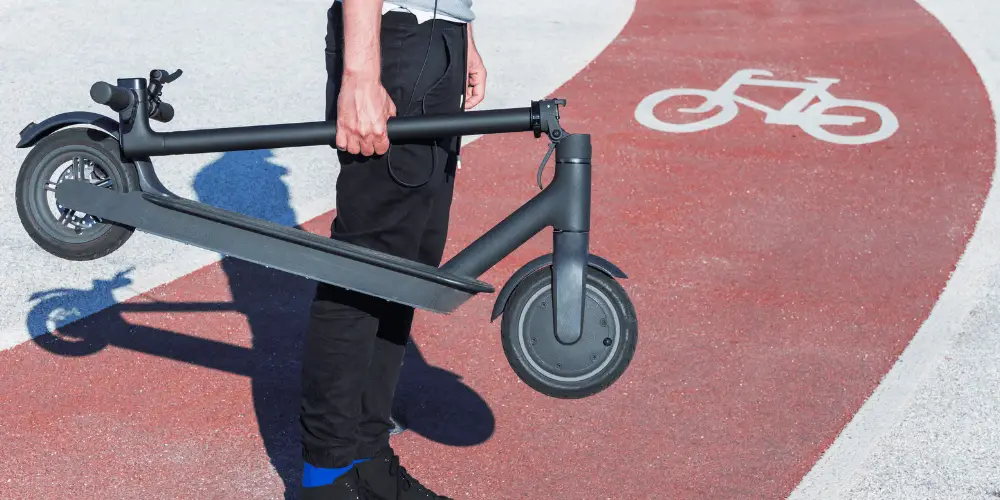Navigating the bustling city streets on your electric scooter becomes even more seamless when you have the right accessories, and a portable charger is a game changer. In this article, we delve into the intricacies of portable chargers, helping you understand their crucial role in ensuring your scooter is always ready for your next adventure. We’ve meticulously reviewed the best options available in the market, providing you with valuable insights to make a well-informed decision tailored to your needs. Whether you’re a daily commuter or an occasional rider, our exploration of portable chargers aims to enhance your electric scooter experience, ensuring you’re never left stranded and always ready to juice up your journey.
Key Takeaways:
- JuiceBox 40 is a top-tier charger with built-in Wi-Fi and app scheduling.
- EVoCharge offers a clean design and is manufactured in the USA.
- Megear Level 1+2 is an affordable option with both 120- and 240-volt options.
- Portable chargers are essential for electric scooter enthusiasts on the go.
Understanding the Basics of Electric Scooter Charging
Electric scooters, like all battery-operated devices, rely on efficient chargers to keep them running. But not all chargers are created equal. Some offer faster charging times, while others prioritise portability or smart features. Understanding these nuances is crucial when choosing a charger for your scooter.
How Electric Scooter Chargers Work
At its core, a charger converts electrical energy from a power source into a form that your scooter’s battery can store. The efficiency and speed of this process can vary based on the charger’s design and capabilities.
Standard vs. Fast Chargers
- Standard Chargers: These are the most common type of chargers and usually come with the scooter. They offer a balance between charging time and battery health.
- Fast Chargers: As the name suggests, these chargers can juice up your scooter in a fraction of the time a standard charger would take. However, frequent use might affect battery longevity.
Top Portable Chargers for Electric Scooters: A Review
JuiceBox 40 Smart Charging Station
Pros:
- Built-in Wi-Fi: Allows for app scheduling and voice control.
- Versatile: Offers plug or hardwire options.
- Feature-rich: Integrated cord storage, locking security mechanism, and adjustable 40-amp capacity.
Cons:
- Price: It’s on the higher end of the spectrum.
| Key Specs | Details |
| Type | Level 2, 240 volts |
| Power Connection | 14-50 plug or hardwire |
| Max Output | 40A |
| Cord Length | 25 ft. |
EVoCharge Electric Vehicle Charging Station
Pros:
- Design: Clean, modern look that’s low-profile.
- Weather-resistant: Suitable for outdoor installations.
- Made in the USA: Comes with a three-year factory warranty.
Cons:
- Cord Length: Standard charging cord is only 18 feet, though a longer version is available.
| Key Specs | Details |
| Type | Level 2, 240 volts |
| Power Connection | 6-50 plug |
| Max Output | 32A |
| Cord Length | 18 ft. |
Megear Level 1+2 Charger
Pros:
- Versatility: Offers both 120- and 240-volt options.
- Portability: Comes with a 25-foot cord for convenience.
- Weather-resistant: Suitable for varying conditions.
Cons:
- Amperage: Limited to 16 amps, making it slower for larger batteries.
| Key Specs | Details |
| Type | Level 1, 120 volts; Level 2, 240 volts |
| Power Connection | NEMA 6-20 plug |
| Amperage | 16A |
| Cord Length | 25 ft. |
Factors to Consider When Choosing a Portable Charger
Choosing the right charger goes beyond just looking at the specs. Here are some factors to consider:
- Compatibility: Ensure the charger is compatible with your scooter model.
- Charging Speed: Consider how fast you need your scooter to charge.
- Portability: If you’re always on the move, a compact charger might be ideal.
- Price: Balance between cost and features to get the best value for money.
- Warranty: A good warranty can save you from unforeseen expenses.
Tips for Achieving the Best Charging Performance
- Regular Maintenance: Clean the charging port regularly to prevent dust and debris from affecting the connection.
- Optimal Temperature: Batteries charge best at room temperature. Avoid charging in extremely cold or hot conditions.
- Use Recommended Chargers: Always use the charger that came with the scooter or one that the manufacturer recommends.
Maintaining Your Charger for Longevity
- Storage: Store your charger in a cool, dry place.
- Handle with Care: Avoid dropping the charger or pulling the cord forcefully.
- Regular Inspection: Check for any wear and tear, especially on the cords and plugs.
The Future of Electric Scooter Charging
With technological advancements, the way we charge our electric scooters is bound to evolve. Here’s a glimpse into the future:
- Wireless Charging: Just like smartphones, future scooters might not need cords.
- Solar Charging: Using renewable energy, solar panels on scooters could provide supplementary power.
- Fast Charging Stations: Public charging stations might offer super-fast charging, juicing up scooters in minutes.
FAQs
Q1. How long does it take to fully charge an electric scooter?
Most electric scooters take between 4 to 8 hours to charge fully. However, this can vary based on the scooter’s battery capacity and the charger’s output.
Q2. Are all electric scooter chargers universal?
No, while many chargers might fit different scooter models, it’s essential to use a charger compatible with your scooter to ensure safety and optimal charging.
Q3. How can I extend the battery life of my electric scooter?
- Avoid complete discharges; instead, try to charge the scooter when it reaches 20%.
- Store in a cool, dry place.
- Use the scooter regularly to prevent battery degradation.
Q4. Can I use a fast charger for my scooter?
While fast chargers can juice up your scooter quickly, frequent use might affect the battery’s lifespan. It’s best to use them sparingly.
Brandon D
I'm an avid electric mobility advocate and the guiding force for a community of electric scooter enthusiasts. As an editor with a knack for detail and a passion for sustainable transport, I dedicate myself to providing in-depth reviews and expert insights into the latest in electric scooter technology.






